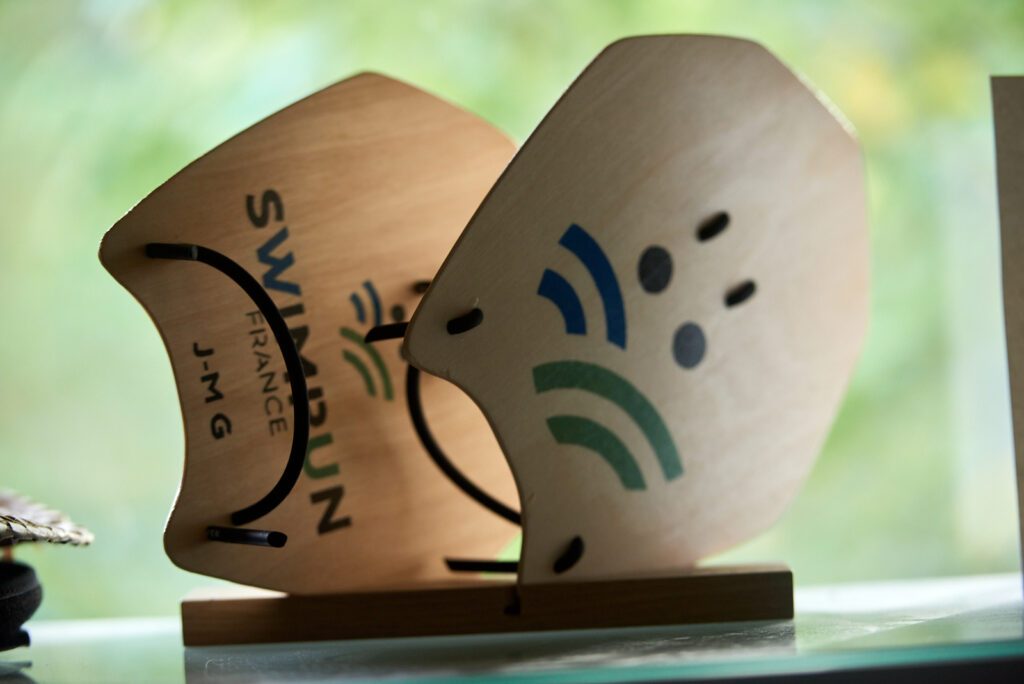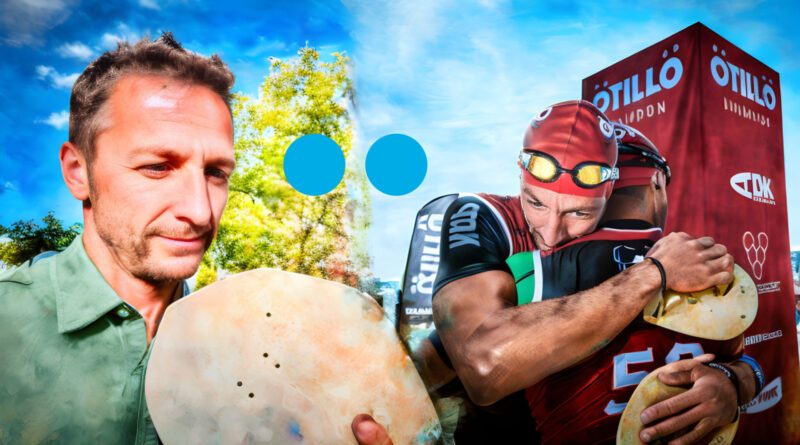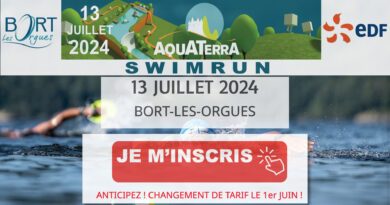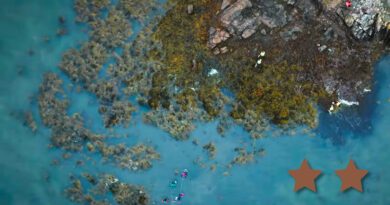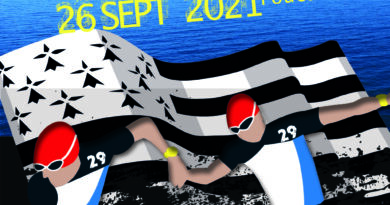Yann Duquoc, l’artiste des plaquettes
Yann Duquoc et Sophie Dolphin animent avec brio la communauté florissante du swimrun de l’Hérault. Depuis le lac de Salagou jusqu’à Valras, ces explorateurs des éléments sillonnent avec passion leur splendide territoire. Leurs armes secrètes ? Des sorties variées et ludiques où ils conçoivent et testent de nouveaux concepts de courses. L’innovation se niche aussi dans le matériel avec la création de plaquettes en bois, rareté qui tient autant de l’œuvre d’art que de l’équipement pointu.
Grâce à leur dynamisme, ils font découvrir aux swimrunners héraultais les richesses insoupçonnées de leur département. A l’image des éléments, leur communauté est en constante évolution, nourrie par la créativité et la passion de ses membres.
[🇬🇧 translation in english here below]
A] 📍Swimrun France: Bonjour Yann, peux tu te présenter en quelques lignes ?
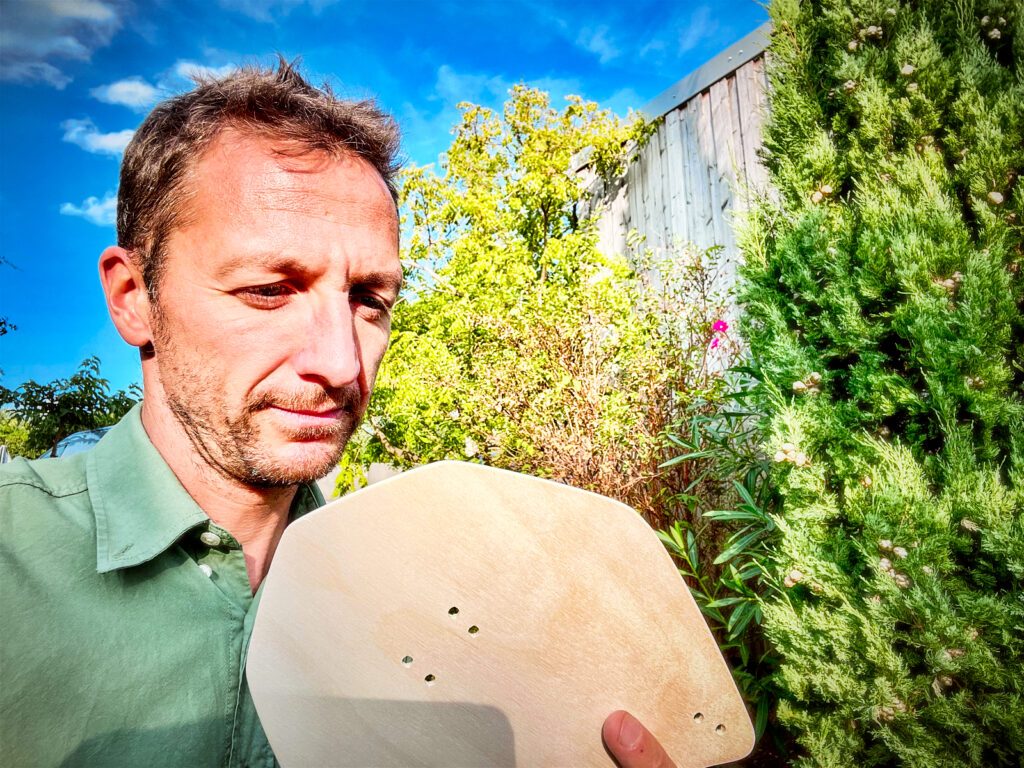
Yann Duquoc :
Bonjour, j’ai 38 ans, je gère la communauté de Swimrun Hérault depuis 5 ans et je suis tombé amoureux de ce sport magnifique grâce au reportage d’intérieur sport en 2015. (voir ici)
Je le pratique le plus souvent possible en sortie entre amis ou par la communauté. Ça me permet de partager et de faire découvrir ce sport si particulier.
Swimrun Hérault organise des sorties dans les différents spots de l’hérault, et en faisant des initiations pour adultes, pour enfants ou encore une course d’orientation en swimrun. Même en hiver on essaye de maintenir un lien en faisant le tour des piscines de l’hérault. Dans la vie professionnelle je suis ingénieur structure en bâtiment et spécialisé en construction bois.
B] 📍SRF : Comment t’es venue l’idée de fabriquer des plaquettes en bois, et pourquoi ce matériau en particulier ?
YD :Tout simplement après avoir nagé avec des plaquettes en carbone.
J’ai trouvé que leurs légèretés étaient incroyables, l’impression de ne rien avoir dans les mains lors du retour aérien. Mais je les trouvais trop rigides dans l’eau. Ma réflexion est donc partie de là, quel est le matériau à la fois léger, flexible et solide? Etant fils et petit-fils d’ébéniste et travaillant avec lui tous les jours, c’est un matériau que je connais très bien, son odeur à bercé mon enfance.
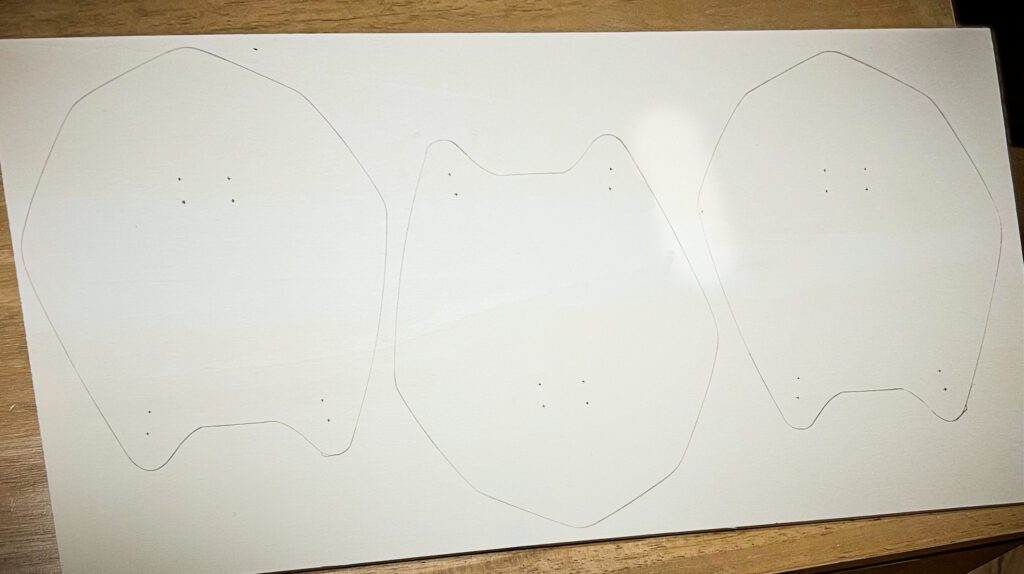
C] 📍SRF : Outre l’aspect écologique indéniable sur les autres matériaux, quels sont les avantages que procurent le bois ?
YD : Le bois est un matériau extraordinaire. Outre l’aspect écologique que tout le monde connaît, il est surtout le seul matériau anisotrope dans 3 dimensions. C’est-à-dire qu’il n’a pas du tout les mêmes propriétés mécaniques en fonction du sens du fil du bois. Il est également très léger. Autour de 500kg/m3 pour les bois que j’utilise.
Les plaquettes flottes donc très bien et c’est une aide, lorsque comme moi, vous aimez nager en gardant la main devant longtemps à la surface de l’eau en crawl.

D] 📍SRF : Tes plaquettes sont de véritables oeuvres d’art, d’ailleurs tu les fournies avec un support et de la sérigraphie. Tu as des talents cachés d’artiste ?
YD : J’ai commencé par fabriquer 6 paires pour remercier mes amis qui m’aident à faire vivre notre communauté du Swimrun Hérault. C’était à Noël alors j’ai voulu les mettre en valeur avec un support pour une belle présentation.
Ces plaquettes ne sont pas seulement faites pour nager, elles sont aussi très belles. Je trouvais ça dommage de les laisser au fond d’un sac et inversement de les laisser sur l’étagère 😉.
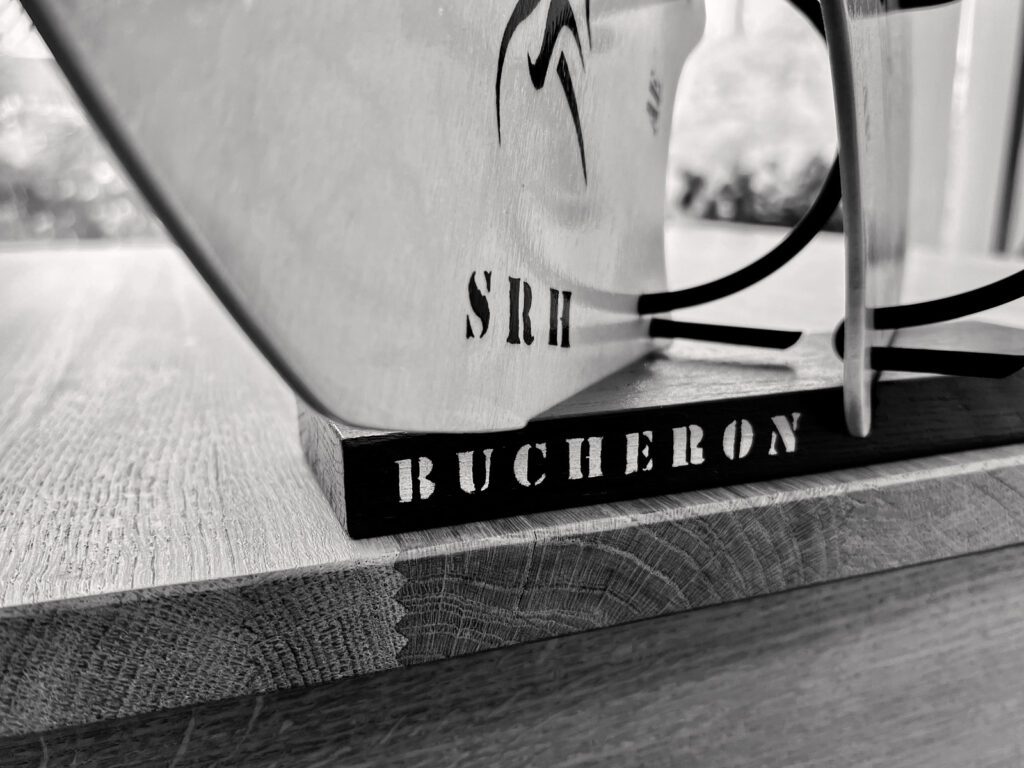
Chaque paire est personnalisée. D’une part avec les initiales de leur propriétaire et d’autre part par la taille et le sens des fibres du bois. Je pense à eux quand je les fabrique, ce sont des personnes que j’aime beaucoup alors je m’applique pour la fabrication et la finition.
E] 📍SRF : Comment se comporte tes plaquettes pour résister à l’humidité ?
YD: Je les protège par un vernis marin. J’essaye plusieurs types. Vernis polyuréthane et vernis acrylique. Je manque encore de retour sur la version acrylique mais la version polyuréthane est efficace. Il faut surtout bien traiter les points singuliers comme les bords d’attaque et les percements des élastiques pour éviter les infiltrations d’eau par les plis du contreplaqué.
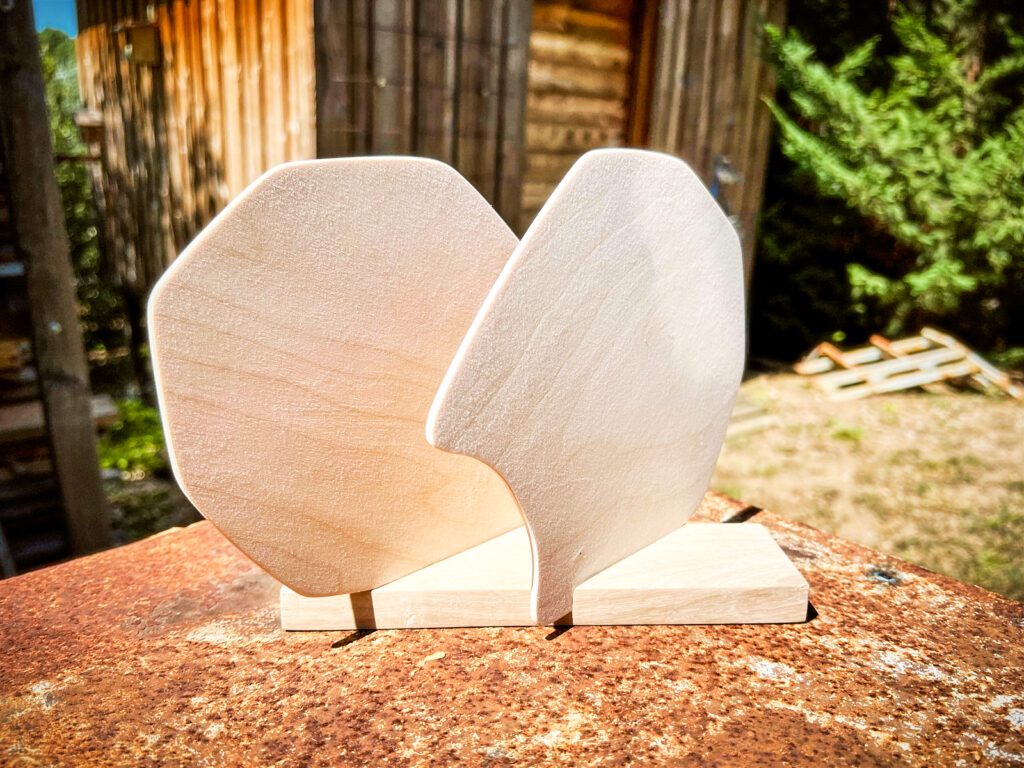
F] 📍SRF : Proposes tu des tailles différentes, ou des formes différentes ? Quels sont les retours de la communauté Swimrun Hérault ?
YD : J’utilise trois gabarits: Format XS, S et M. Et ces trois tailles se déclinent avec deux essences de bois (peuplier et bouleau), 2 épaisseurs de plaquettes (3 et 4mm) et deux sens des fibres (longitudinales ou transversales).
Je m’amuse à essayer un peu toutes les combinaisons pour trouver la plaquette adapté à chacun. Les retours de la communauté sont excellent. C’est un vaste panel de testeur, chacun à sa façon bien à lui de les utiliser et de les entretenir. Et on commence à être connu, on ne passe plus inaperçu en compétition. 😉
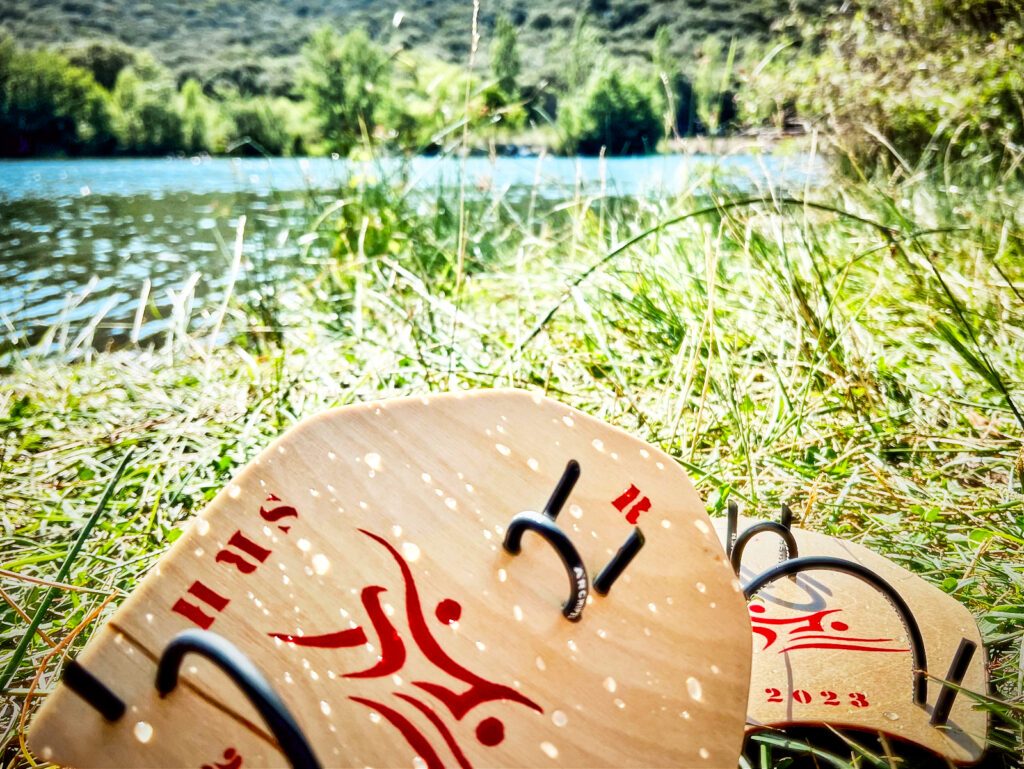
G] 📍SRF : Quels sont tes conseils pour optimiser les performances et durabilité des plaquettes en bois ?
YD : Le premier conseil c’est d’abord de les utiliser! Elles ne sont pas faites pour rester sur l’étagère. Pour l’entretien c’est comme une combinaison, il faut les rincer à l’eau douce et les essuyer après utilisation et surtout éviter de les garder longtemps dans un sac humide.
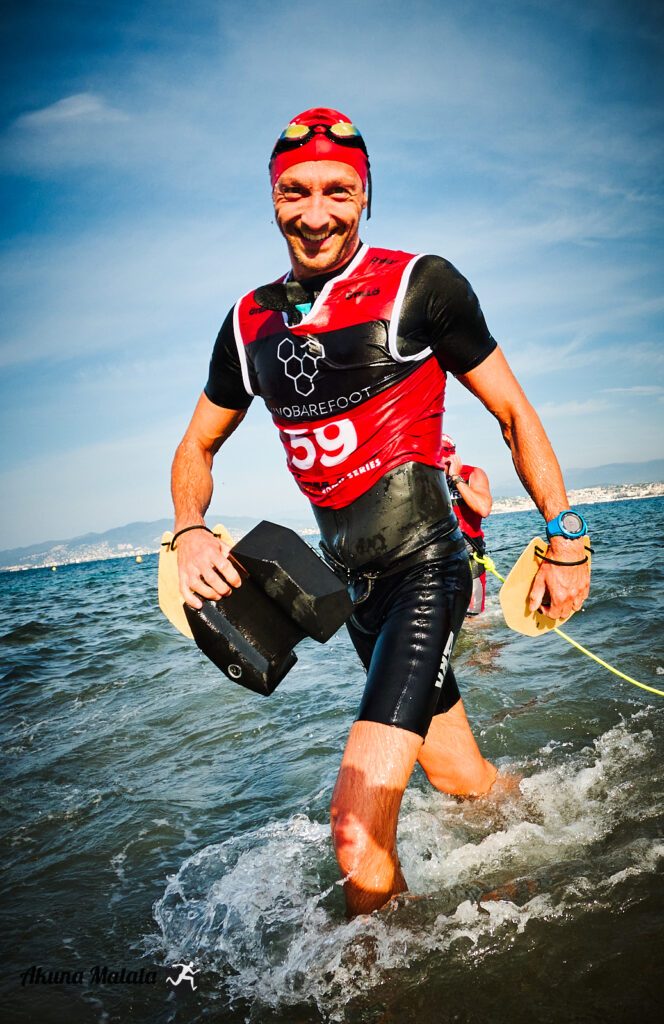
H] 📍SRF : Tu fais des plaquettes en bois en série très limitée, il y aurait il possibilité à l’avenir d’augmenter la production si la demande d’originalité, d’esthétisme se révèle importante ?
YD : Je fais ça pour le plaisir et pour les amis. La fabrication des plaquettes est très longue donc je ne veux pas me lancer dans une production commerciale.
J’ai déjà un métier et une passion qui m’occupe assez. Mais je serais ravis d’avoir pu inspirer d’autre swimrunner ou même un fabriquant.
Je ne cache rien, je ne revendique rien, et j’espère avoir ouvert une voie que chacun est libre d’emprunter.
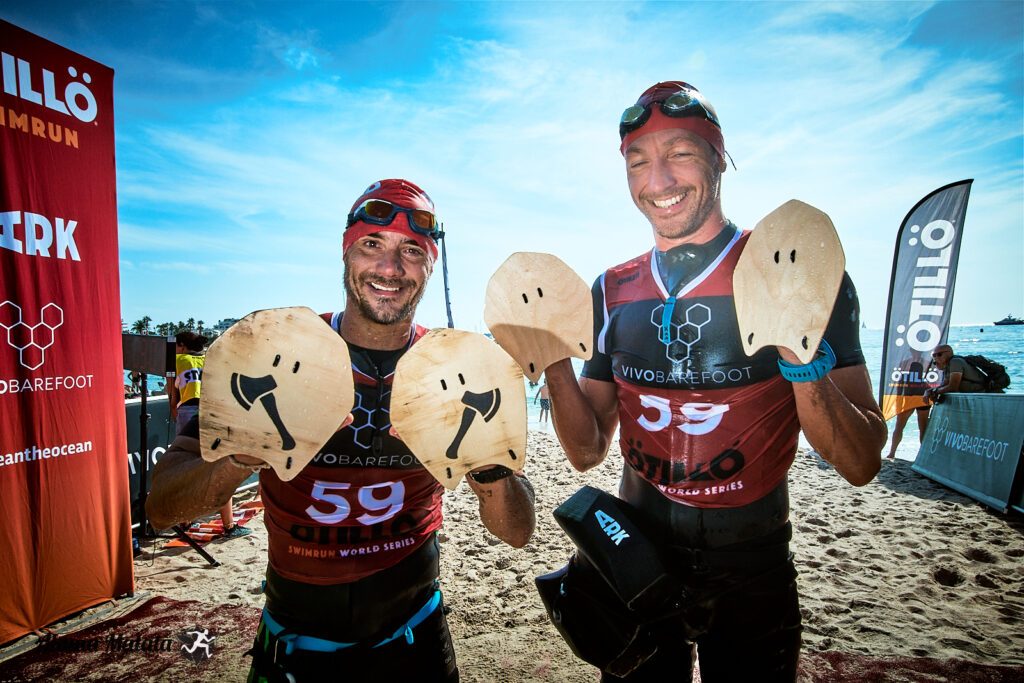
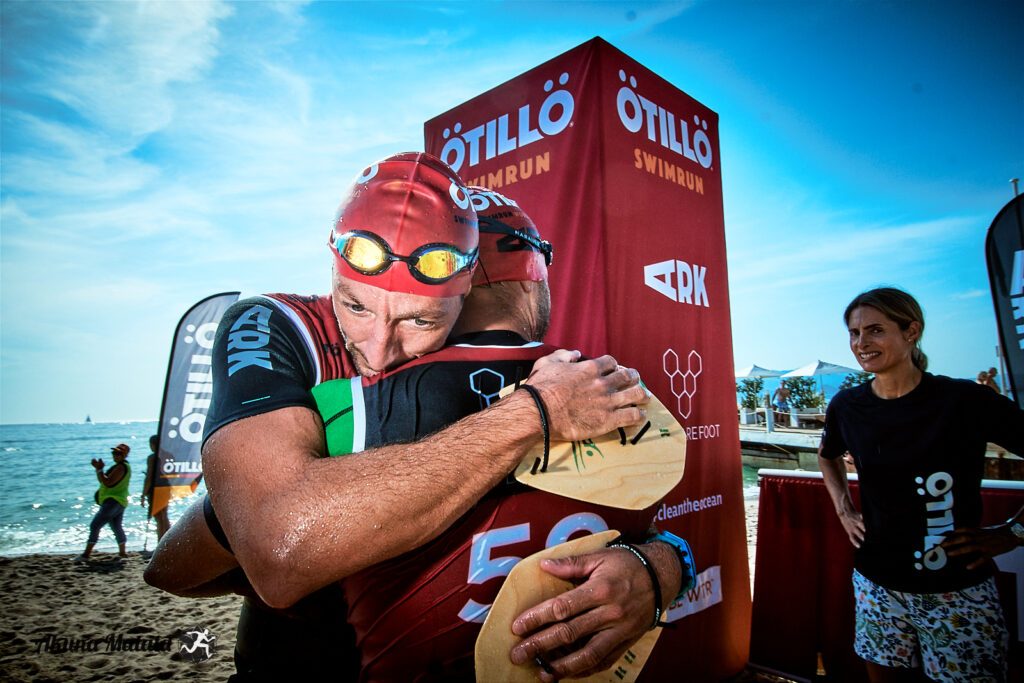
SRF : merci Yann
✍️Yann Duquoc IG: @swimrunherault
📷 crédit photos Yann Duquoc / Akuna / ÖtillÖ
🧬 traduction Bing ai
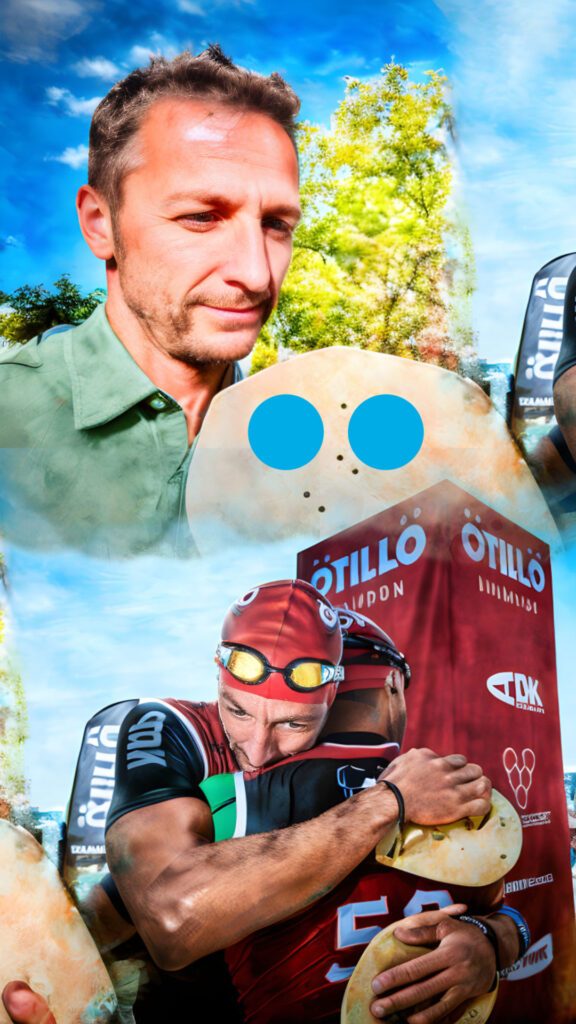
Yann Duquoc is a pivotal figure within the flourishing Hérault swimrun community. An engineer by training, he has leveraged his significant technical skills to develop a major innovation: swimrun fins crafted from wood and produced in an artisanal manner. In this unfiltered interview, Yann Duquoc reveals the workings of his disruptive project, the fruit of many hours of manual labor.
🇬🇧
A] 📍Swimrun France: Hello Yann, can you introduce yourself in a few lines?
Yann Duquoc: Hello, I’m 38 years old, I manage the Swimrun Hérault community for 5 years and I fell in love with this beautiful sport thanks to the Inside Sport report in 2015. (see here) I practice it as often as possible in outings with friends or with the community. It allows me to share and introduce this very special sport. Swimrun Hérault organizes outings in the different spots of Hérault, and also initiations for adults, children or even an orienteering race in swimrun. Even in winter we try to keep a link by touring the pools of Hérault. In my professional life I am a structural engineer in building and specialized in wood construction.
B] 📍SRF: How did you come up with the idea of making wooden paddles, and why this material in particular?
YD: Simply after swimming with carbon paddles. I found their lightness incredible, the feeling of having nothing in my hands during the aerial return. But I found them too rigid in the water. My reflection was therefore based on that, what is the material that is both light, flexible and strong? Being the son and grandson of a cabinetmaker and working with him every day, it is a material that I know very well, its smell rocked my childhood.
C] 📍SRF: Besides the undeniable ecological aspect over other materials, what are the advantages of wood?
YD: Wood is an extraordinary material. Besides the ecological aspect that everyone knows, it is above all the only anisotropic material in 3 dimensions. That is to say, it does not have the same mechanical properties at all depending on the direction of the wood grain. It is also very light. Around 500kg/m3 for the woods that I use. The paddles float very well and it is a help, when like me, you like to swim keeping your hand in front of you for a long time on the surface of the water in crawl.
D] 📍SRF: Your paddles are real works of art, you even provide them with a support and screen printing. Do you have hidden talents as an artist?
YD: I started by making 6 pairs to thank my friends who help me to make our Swimrun Hérault community live. It was Christmas so I wanted to highlight them with a support for a nice presentation.
These paddles are not only made to swim, they are also very beautiful. I thought it was a shame to leave them at the bottom of a bag and conversely to leave them on the shelf 😉.
Each pair is personalized. On the one hand with the initials of their owner and on the other hand by the size and direction of the wood fibers. I think of them when I make them, they are people that I love very much so I apply myself for the manufacture and the finish.
E] 📍SRF: How do your paddles behave to resist moisture?
YD: I protect them with a marine varnish. I try several types. Polyurethane and acrylic varnish. I still lack feedback on the acrylic version but the polyurethane version is effective. It is especially important to treat the singular points such as the leading edges and the holes of the elastics to avoid water infiltration by the folds of the plywood.
F] 📍SRF: Do you offer different sizes, or different shapes? What is the feedback from the Swimrun Hérault community?
YD: I use three templates: Size XS, S and M. And these three sizes are available with two wood species (poplar and birch), 2 thicknesses of paddles (3 and 4mm) and two directions of the fibers (longitudinal or transverse). I have fun trying all the combinations to find the paddle adapted to each one.
The feedback from the community is excellent. It is a wide range of testers, each one has his own way of using and maintaining them. And we are starting to be known, we no longer go unnoticed in competition. 😉
G] 📍SRF: What are your tips to optimize the performance and durability of the wooden paddles?
YD: The first tip is to use them! They are not made to stay on the shelf. For maintenance, it’s like a suit, you have to rinse them with fresh water and wipe them after use and especially avoid keeping them for a long time in a wet bag.
H] 📍SRF: You make wooden paddles in very limited series, would there be a possibility in the future to increase the production if the demand for originality, aesthetics is important?
YD: I do this for fun and for friends. The manufacture of the paddles is very long so I don’t want to get into a commercial production. I already have a job and a passion that keeps me busy enough. But I would be delighted to have inspired other swimrunners or even a manufacturer. I don’t hide anything, I don’t claim anything, and I hope I have opened a path that everyone is free to take.
SRF: thank you Yann

